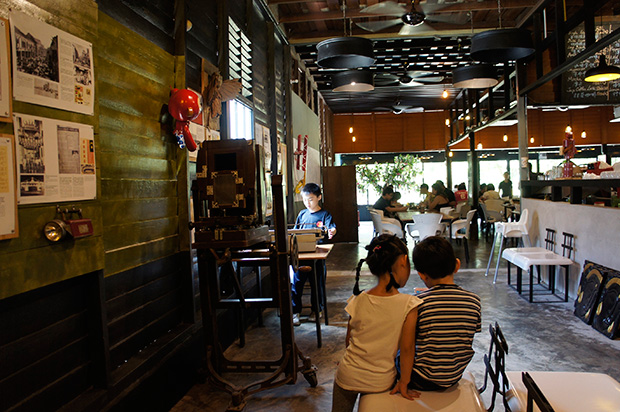JENJAROM, Oct 9 — Coming off the SKVE (South Klang Valley Expressway) into Jenjarom, take an immediate left turn after the traffic lights and you will find yourself on the gravel driveway that leads to the entrance of Mansion 1969.
From the outside, it appears to be little more than an old wooden home built in the simple vernacular architecture that is characteristic of new Chinese villages.
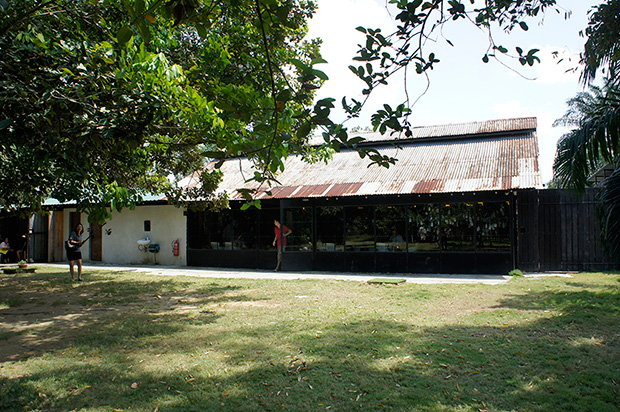
But the signboard and buntings tell you that this 10-month-old establishment is both a cafe and a heritage corridor.
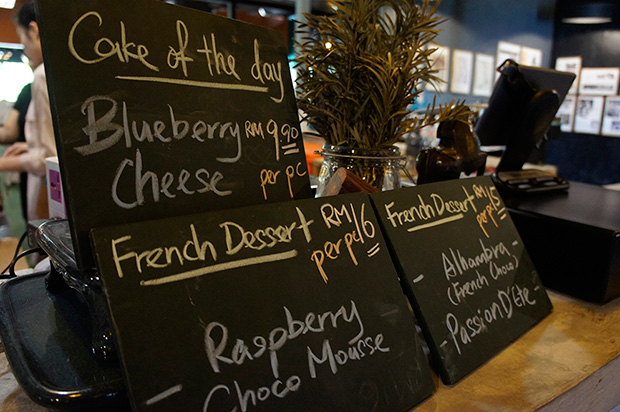
To enter, press the doorbell and wait for the door to slide open. Once inside, your senses will be subjected to multiple stimuli all at once. The spacious front portion houses an island coffee bar and payment counter, with a portion of the menu written on a chalkboard above. The full offerings include espresso-based coffee drinks, French-style cakes, and an extensive selection of noodle and rice dishes.
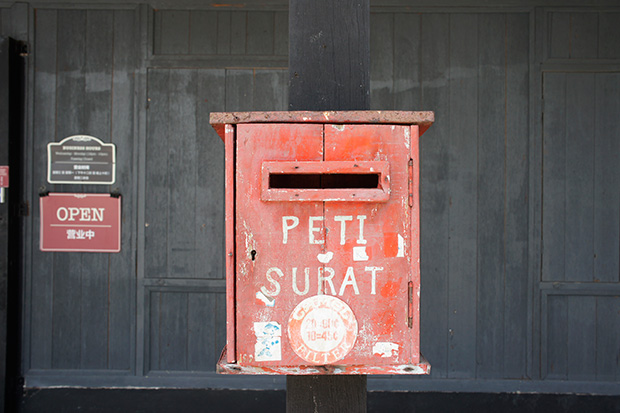
Surrounding the front portion is a charming gallery displaying antique collectibles. A vintage postman’s bicycle rests against a wall and across from it, an antique studio camera stands. Those “do not touch” signs that usually accompany antique exhibits are conspicuously absent.
The walls are plastered with pages from a history book, filled with sepia and black and white photos. Walk through to read snippets of Malaysia’s past and marvel at the classic images that are worth far more than a thousand words. More are showcased on old window shutters tacked to columns in the dining area.
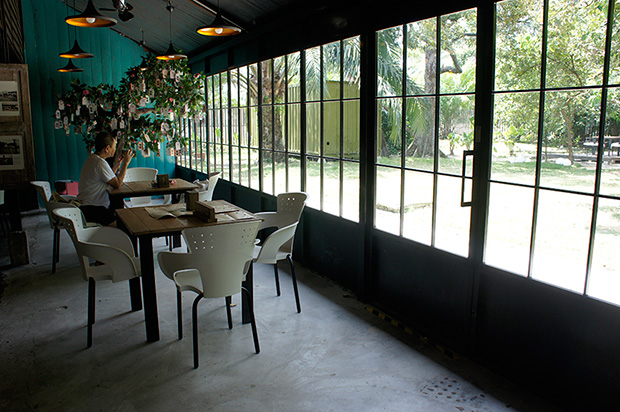
It’s certainly a delight and a surprise to find this in a sleepy little town in Banting.
Even the local townsfolk were taken by surprise when Mansion 1969 was first unveiled; this former residence of the Ser family has been occupying Lot 389 for 47 years, hidden in plain sight, shrouded by the oil palm plantation that still surrounds it and with just a slip road leading in from the main thoroughfare.
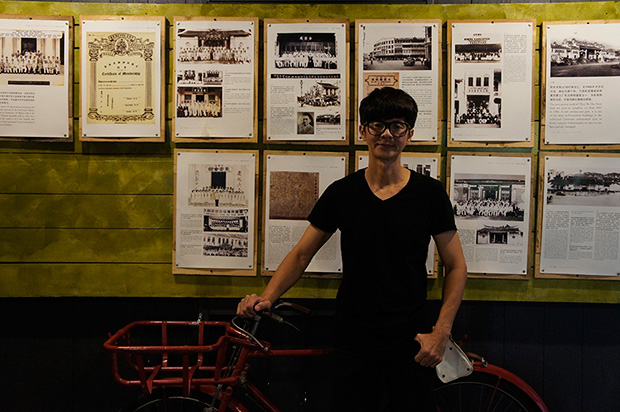
“A lot of people who pass by the main road outside had no idea that this house existed,” says Pierre Teh, one of three partners at Mansion 1969, along with Dr Ser Wue Hiong and Teh Deng Qi.
When the trio decided to band together and set up a cafe-cum-heritage gallery, they searched for a suitable location at Jenjarom New Village, about 2.5 kilometres away, but did not find any.
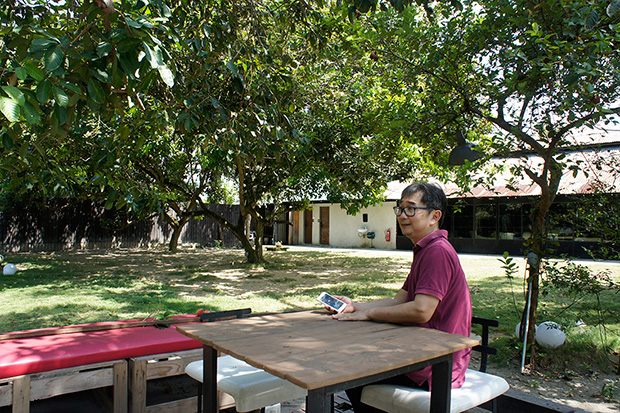
“Then Dr Ser told me about this building, which belonged to his family. He was unsure about it as there was no proper entrance and it was outside the New Village, which is where most visitors head to.”
Dr Ser grew up in this house but has since moved to Kuala Lumpur, where he is a history professor and Head of the Library Committee at the Centre for Malaysian Chinese Studies. “It had been abandoned for a number of years. The rental value is pretty low so it’s not worth renting it out.”
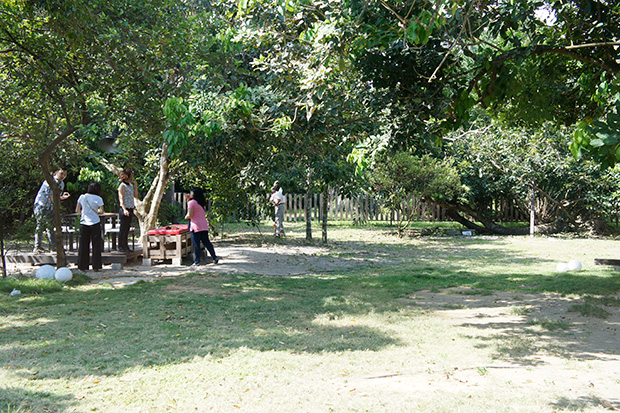
Pierre, however, saw the potential in it and so they set up refurbishing it. The first thing they did was to clear a path from the main road and create a parking area out front. They left the main structure of the building intact but tore down the room walls, and put in a proper drainage and waste disposal system.
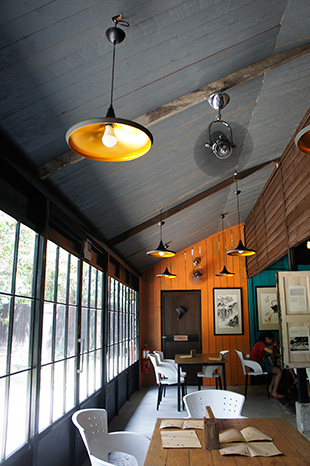
Initially, they left the open ceiling as it was, so that diners could sit underneath and admire the high pointed roof. “Then we realised that the heat came in directly through the roof, making the entire place really stuffy. We would sit under the air-conditioning and sweat buckets!” To counter the problem, they had to put in zinc panels as a buffer.
A high ceiling would have provided better spatial effect but the lowered adaptation has not hindered comfort levels, aided by an all-glass back wall that looks out to a fruit orchard. A single table sits among the rambutan trees, with some low benches underneath another shady canopy, making it an ideal outdoor event space. In time to come, Mansion plans to utilise their backyard for BBQ dinners.
For now, the menu is extensive enough to please many palates. Conceived by Deng Qi, who honed his F&B experience at a quaint heritage cafe in his Kedah hometown called Anak Kulim Eatery & Gallery, there’s a fair mix of local and Western dishes, often with interesting innovations.
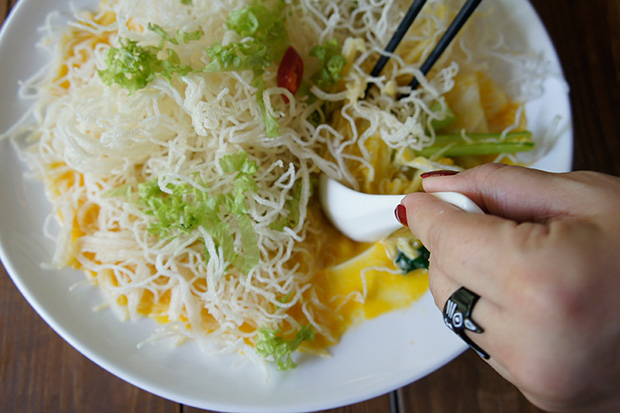
The Golden Age Mee Hoon is a fine example: Strands of deep-fried vermicelli lie on top of blanched vegetables and meat, over which you pour an egg-y pumpkin gravy to soften the noodles. It tastes like Cantonese noodles but with the slight sweetness of pumpkin, which also lends an appetisingly vibrant yellow hue to the liquid. If you’re looking for something simple and hearty, the Eggplant Rice is it and that is exactly what you get — rice with fried eggplant slices coated in a sweet, garlicky sauce that you would want to drench the grains in.
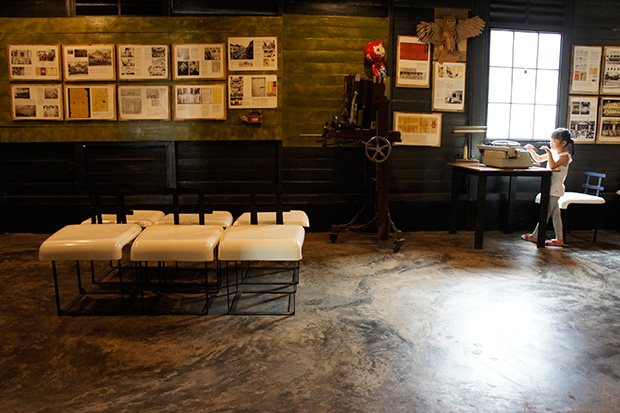
Pierre reveals that the cafe was actually secondary to the plans; their main aim was to share and present Malaysian history in interesting ways. “We knew, however, that if we were to set up a gallery alone, not many would come,” says Pierre. “Or they would come once and be done with it. We have to give people a reason to visit again and again.”
Pierre and Dr Ser are happy to leave the kitchen to Deng Qi while they focus on the rest of the running of Mansion 1969 and in particular, the gallery. The two first met at an event organised by the Fo Guang Shan Dong Zeng Temple in Jenjarom, which featured an exhibit of the town’s olden days, and discovered a shared passion for Malaysian arts, culture and heritage.

While Dr Ser’s inclination towards history is no surprise, Pierre leans more on the creative inspirations. A Jack of many artistic trades, he started out as a photographer before turning to make-up, setting up a school and counting character make-up and body painting as among his specialties. He also makes customised props and decorative items for conceptual photo shoots and music videos.
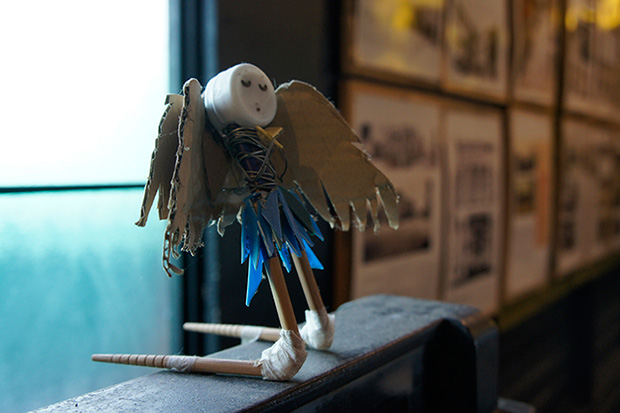
“I’ve always been drawn to vintage stuff and love upcycling things,” says Pierre, demonstrating how one of his innovations work: A robot-like character constructed from old food tins, holding a small wood plank that can be used as a notice board or a tray. Its facial expression is also changeable. Pierre points to two rows of seats in the gallery area with white plastic covers. “These,” he says while lifting one up, “were Poslaju boxes!”
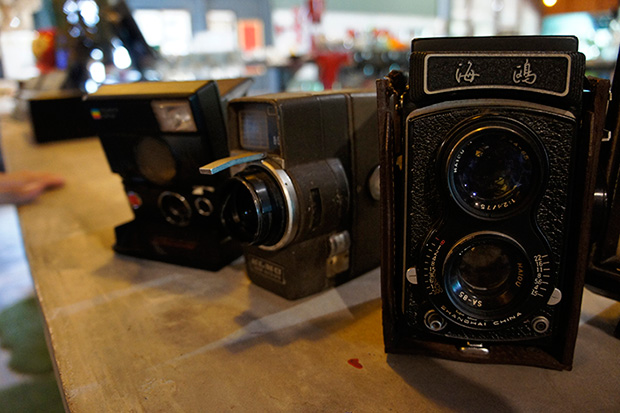
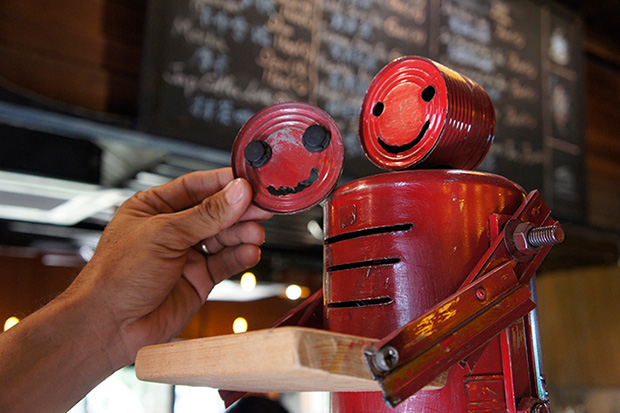
Many of the retro collectibles on display at Mansion 1969 are from his personal collection, with some pieces — the vintage typewriter by the window is one — contributed by friends or customers. “Instead of ‘donating’ to us, I told them to just leave them here... so we don’t own them but they are here, for everyone to enjoy. One of the key things we wanted was to make heritage accessible, that’s why we allow people to touch the displays. Kids can play with the studio camera, even though it doesn’t work anymore but it will pique their curiosity and let them experience a slice of history.”
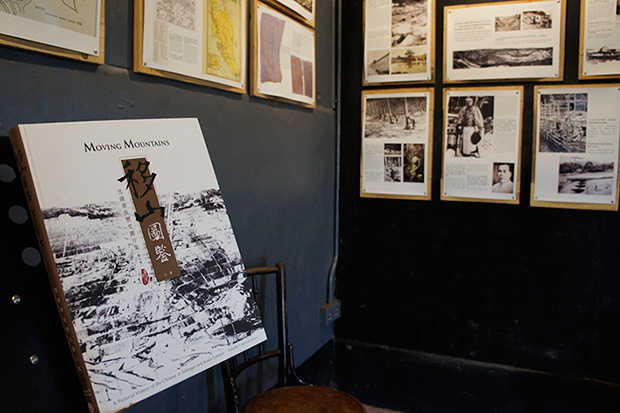
The main historical presentations are the pages that deck the walls, which are taken from the trilogy, Moving Mountains: A Pictorial History of the Chinese in Selangor and Kuala Lumpur. Published by the Centre for Malaysian Chinese Studies, the project started some two decades ago but kept getting stalled, and was co-authored by academicians familiar with the subject.
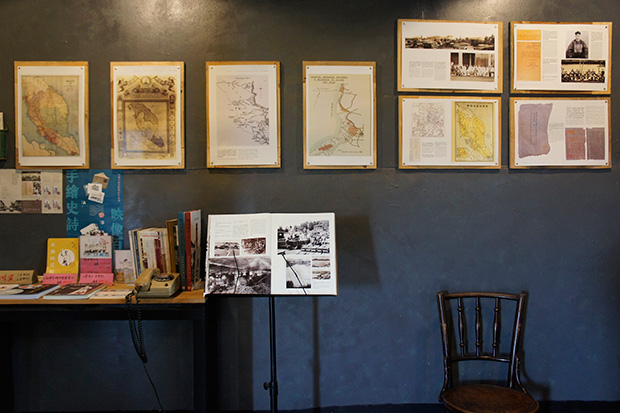
The three volumes feature more than 1,600 photos. Dr Ser edited the three bilingual (English and Chinese) volumes, an undertaking that took him four years. You can purchase the books at Mansion (RM500 for the complete set) or satisfy yourself with browsing the pages, which are meant to stay up as permanent displays. They will, from time to time, make way for transient exhibitions that Mansion is open to hosting.
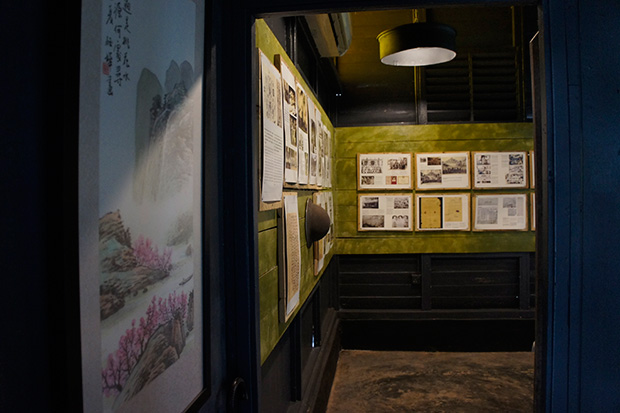
That’s the other extension of this cafe-cum-gallery: to be a space, a platform that supports endeavours that help further local culture. “We know how difficult it is for artists to get their work out. Their funding is limited and everything needs money. What we offer is a free space and only when they sell a piece of work do we take a small commission from them.”
Mansion 1969 is more than just a coffee and grub joint, and also goes beyond being a mini museum of Malaysian history and arts. “We named it 1969 as that was when this building was constructed. Of course, many Malaysians will remember that year for the May 13 incident. Even though we don’t like to talk about it, it is a part of us,” Pierre explains. “But 1969 is about more than just that; through Mansion 1969, we hope to give positive meaning to that point in our history.”
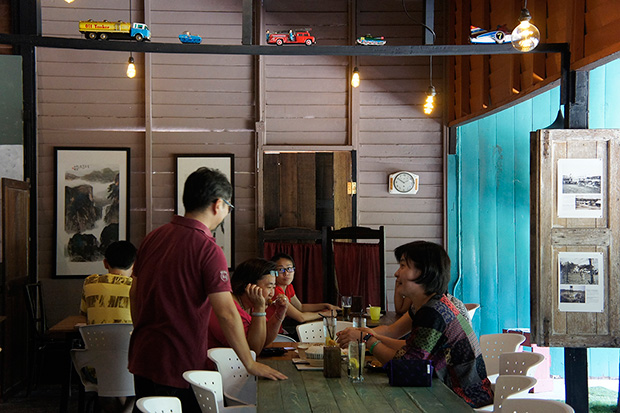
That’s not difficult; good coffee and satisfying eats surrounded by vestiges of our past in a beautifully preserved traditional home are all good reasons to head out of Kuala Lumpur, and make a day trip of Mansion 1969 and Jenjarom.
Mansion 1969
Lot 389, Batu 13, Jalan Klang Banting
Kampung Sungai Rambai, Jenjarom, Selangor
Tel +603 3191 5969
Opens 12pm-10pm, Wed-Mon; closed on Tuesdays
Vivian Chong is a freelance writer-editor and founder of thisbunnyhops.com
















